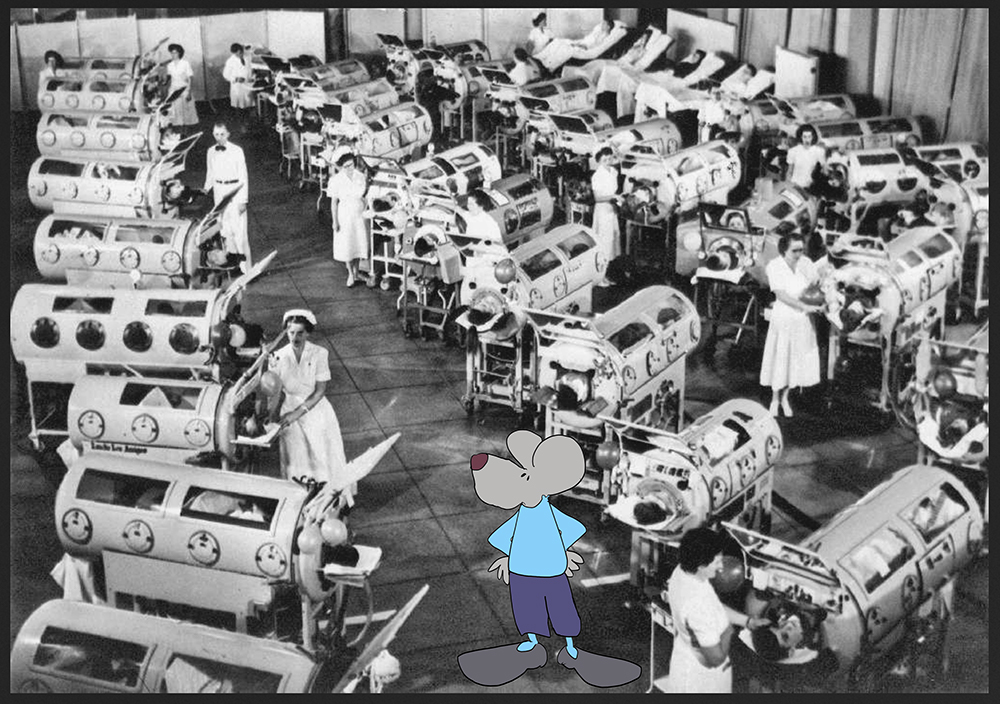I can remember my Mom being very worried about her kids getting Polio. She used to talk about this sometimes. And it was for a good reason. In the United States, a major outbreak of Polio occurred in 1952. By that time, she had two daughters and one little baby boy.
During that year, the disease infected around 57,000 people. It killed over 3,000 people. And then, it rendered some 20,000 with anything from mild to debilitating paralysis. Comparing these numbers to COVID-19 in the United States, it seems like a bat of the eye. To date, 31.2 million Americans have had COVID. Of those, 562,000 have died.
With Polio, that outbreak in 1952 was the last great appearance of this disease. But at that time, it was one of the most feared things in the world.
Polio would often strike without warning, much like COVID. In most cases of Polio there were no symptoms at all (around 75%). However, that wasn’t the situation for everyone. In 0.1-0.5% of infections, the patient would suffer those debilitating effects.
The paralysis came in the way of deformities in the limbs. These were life-long disabilities. In some cases, the muscles of the neck and diaphragm would be paralyzed, which meant that the patient could not breathe on their own. In the early days, this required the use of an “iron lung,” which was a large negative-pressure chamber that breathed for someone as they lay inside.
Sometimes, the “iron lung” treatment was temporary, and the patients eventually got better. But, as of 2013, there were estimated to be six to eight iron lung users. Still. I’m not sure if this is in the United States or world.
Yet, the thing that saved the day was a vaccine. Holy smokes. A vaccine. It was on this date, on April 12, 1955, that scientist Jonas Salk announced the first successful polio vaccine. People were glad to see this. It was rapidly adopted around the world. From the time of the major outbreak to the time of the vaccine was three years. But, when the news was announced, Salk was treated as a hero, and some members of Congress even called for the day to be a national holiday.
Today, the disease has been mostly eradicated, with a few cases worldwide. The vaccine completely put an end to Polio in the U.S.
Here’s another history note of a different type. For quite some time, dolphins were getting caught in tuna-catching nets, and those dolphins would die as a result. We started losing a great number of these beautiful creatures during the 1970s and 1980s. Ask any mermaid you happen to see, what’s the best tuna? A tuna that doesn’t kill a dolphin.
So, in 1990, H. J. Heinz, Chicken of the Sea, and Bumble Bee Seafood said they wouldn’t buy tuna caught in nets that trapped dolphins. And there was a significant change in the tuna-catching industry. Suddenly, the luxury of a tuna salad sandwich, or your Mom’s tuna casserole (with peas), didn’t seem so important anymore.
But dolphins’ lives were saved.
There is the story of Polio and the story of dolphins. Two things that were unrelated and far away. They both were going terribly wrong in our world, and solutions were eventually found to those problems. People gladly supported the efforts to right the wrong. People took the vaccine for Polio. And. They paid more for a can of tuna or stopped eating it all together. And that is how we came to be triumphant over a difficulty.
I’m amazed today at the people who scoff at finding solutions. So far, 562,000 families have lost a mother, a son, a brother, a friend. And so it goes. This disease won’t go away while people continue to spread it through irresponsibility.
We have a lot of heroes today, though. The people who found the vaccine and the ones who are taking it. Three cheers for all of us who care.
=======
“Our greatest glory is not in never falling, but in rising every time we fall.”
― Oliver Goldsmith
========
“It is hard to fail, but it is worse never to have tried to succeed.”
― Theodore Roosevelt
=========
“Success does not consist in never making mistakes but in never making the same one a second time.”
― George Bernard Shaw
========
Jonas saves the day. Others saved the dolphins.
